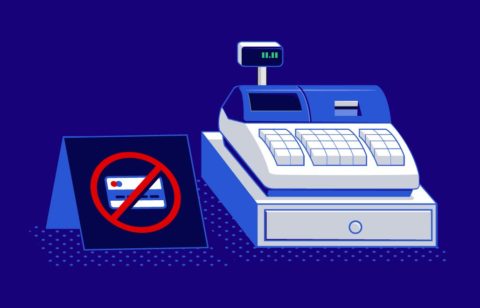A cancer diagnosis may be one of the most challenging experiences, not just physically and emotionally, but financially as well. The costs of treatments like chemotherapy, surgeries and specialized therapies add up quickly, leading many patients to rely on credit cards to cover immediate expenses.
On top of medical bills, there are often additional costs such as travel, lodging and childcare, which may feel overwhelming. With income disruptions from treatment or disability, it may be difficult to stay on top of payments, adding more stress during an already tough time.
This article explores potential solutions for managing credit card debt and offers practical strategies to help cancer patients reduce their financial burden. By understanding available options and taking proactive steps, patients may alleviate some of the financial stress, allowing them to focus more on their recovery and well-being.
Credit Card Debt and Cancer Patients
While many financial relief programs exist, there’s no specific or automatic credit card debt forgiveness for cancer patients. This leaves many with few options beyond debt settlement, hardship programs or even bankruptcy. Here are some of the challenges cancer patients face:
- High-Interest Rates: Credit card balances accumulate interest quickly, increasing the total debt.
- Reduced Income: Many cancer patients cannot work full-time during treatment, losing wages and employer benefits.
- Medical vs. Non-Medical Expenses: Non-medical costs such as travel, lodging and child care often need to be paid with personal credit cards.
- Mental and Physical Toll: The financial burden adds stress, worsening the emotional strain already caused by the disease. This financial toxicity can lead to delayed or skipped treatments, negatively affecting health outcomes.
Exploring Debt Forgiveness and Settlement Options
Cancer patients can explore the following strategies to manage their credit card debt:
- Debt Settlement: This involves negotiating with credit card issuers to settle the debt for less than the total owed. Patients can work with their creditors directly or through a debt settlement company. However, creditors are not obligated to agree, and successful settlements may still result in tax liabilities.
- Financial Hardship Programs: Many credit card companies, including American Express, Chase and Discover, offer temporary hardship programs for individuals experiencing significant financial disruptions. These programs may lower interest rates, reduce monthly payments or waive fees for a limited time. However, credit card usage may be restricted during the hardship period.
- Consider Bankruptcy: For patients unable to settle their debts, bankruptcy may be a viable option. While it provides legal relief from debts, it also leaves a long-term impact on credit reports, making future borrowing more difficult.
Government and Nonprofit Assistance Programs
Cancer patients can access financial relief through government and nonprofit programs:
- Patient Advocate Foundation (PAF): This organization offers financial counseling, debt negotiation services and help with job retention for individuals undergoing cancer treatment.
- CancerCare and The Samfund: These nonprofits provide grants and financial support for essential living expenses, including rent and groceries, helping patients cope with the financial strain of cancer.
- Leukemia and Lymphoma Society (LLS): The LLS offers copay assistance, travel support, and help with utilities, focusing on patients with blood-related cancers.
- Nonprofit Support Services: Programs like the American Cancer Society’s Hope Lodge offer free lodging for patients traveling for treatment, reducing out-of-pocket expenses. Other nonprofits, such as Family Reach, provide direct financial assistance for household bills.
Leveraging Disability and Legal Protections
While cancer-specific credit card debt forgiveness is limited, patients can use disability-related protections:
- Judgment-Proof Status: Cancer patients with limited assets may be considered judgment-proof, meaning creditors are unlikely to pursue legal action because they have no means of collecting payments.
- Wage Garnishment Limits: Many states limit the ability of creditors to garnish disability income, providing a measure of protection for cancer patients receiving Social Security Disability Insurance (SSDI) or Supplemental Security Income (SSI).
- Credit Card Disability Insurance: Some credit cards offer disability insurance that covers minimum payments for a set period if a cardholder becomes disabled. Patients should review their past statements or contact their card issuer to determine if they have this coverage.
Creative Funding Solutions
In addition to traditional debt relief, cancer patients can explore alternative financial support options:
- Crowdfunding Campaigns: Platforms like GoFundMe allow patients to share their stories and raise money from friends, family and generous donors. Many have successfully used these campaigns to cover medical and living expenses.
- Community Fundraisers: Local communities often rally around cancer patients by organizing fundraising events such as charity drives or auctions, providing both financial assistance and emotional support.
Action Plan for Cancer Patients in Debt
Managing credit card debt while battling cancer requires strategic planning. Here’s a step-by-step action plan:
- Contact Creditors Early: Inform credit card companies about your financial hardship as soon as possible to explore hardship programs.
- Work with a Social Worker or Advocate: Many cancer treatment centers have social workers who can connect patients with financial assistance programs and mental health support.
- Monitor Credit Reports: Regularly checking credit reports helps patients stay on top of their financial situation and address any errors or missed payments quickly.
- Consider Professional Advice: Consulting with a financial advisor or credit counselor may provide personalized solutions for debt management and financial recovery.
Hope Through Resources and Planning
While credit card debt forgiveness options for cancer patients may be limited, there are still many resources available to help reduce financial stress. By utilizing nonprofit grants, hardship programs and negotiating with creditors, patients may develop a manageable plan to regain financial stability.
The key is to stay proactive, explore all available options and remain informed, ensuring that financial challenges don’t interfere with the important journey toward healing and recovery.






